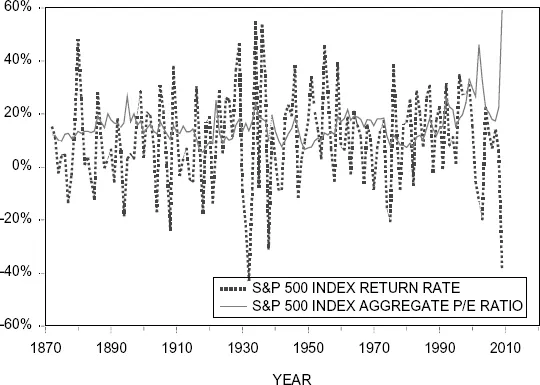
Financial Valuation and Econometrics
Kian Guan Lim
- 604 Seiten
- English
- ePUB (handyfreundlich)
- Über iOS und Android verfügbar
Financial Valuation and Econometrics
Kian Guan Lim
Über dieses Buch
This book is an introduction to financial valuation and financial data analyses using econometric methods. It is intended for advanced finance undergraduates and graduates. Most chapters in the book would contain one or more finance application examples where finance concepts, and sometimes theory, are taught.
This book is a modest attempt to bring together several important domains in financial valuation theory, in econometrics modelling, and in the empirical analyses of financial data. These domains are highly intertwined and should be properly understood in order to correctly and effectively harness the power of data and statistical or econometrics methods for investment and financial decision-making.
The contribution in this book, and at the same time, its novelty, is in employing materials in basic econometrics, particularly linear regression analyses, and weaving into it threads of foundational finance theory, concepts, ideas, and models. It provides a clear pedagogical approach to allow very effective learning by a finance student who wants to be well equipped in both theory and ability to research the data.
This is a handy book for finance professionals doing research to easily access the key techniques in data analyses using regression methods. Students learn all 3 skills at once — finance, econometrics, and data analyses. It provides for very solid and useful learning for advanced undergraduate and graduate students who wish to work in financial analyses, risk analyses, and financial research areas.
Request Inspection Copy
Contents:
- Probability Distribution and Statistics
- Statistical Laws and Central Limit Theorem / Application: Stock Return Distributions
- Two-Variable Linear Regression/Application: Financial Hedging
- Model Estimation / Application: Capital Asset Pricing Model
- Constrained Regression / Application: Cost of Capital
- Time Series Analysis / Application: Inflation Forecasting
- Random Walk / Application: Market Efficiency
- Autoregression and Persistence / Application: Predictability
- Estimation Errors and T -Tests / Application: Event Studies
- Multiple Linear Regression and Stochastic Regressors
- Dummy Variables and ANOVA / Application: Time Effect Anomalies
- Specification Errors
- Cross-Sectional Regression / Application: Testing CAPM
- More Multiple Linear Regressions / Application: Multi-Factor Asset Pricing
- Errors-in-Variable / Application: Exchange Rates and Risk Premium
- Unit Root Processes / Application: Purchasing Power Parity
- Conditional Heteroskedasticity / Application: Risk Estimation
- Maximum Likelihood and Goodness of Fit / Application: Choice of Copulas
- Mean Reverting Continuous Time Process / Application: Bonds and Term Structures
- Implied Parameters / Application: Option Pricing
- Generalised Method of Moments / Application: Consumption-Based Asset Pricing
- Multiple Time Series Regression / Application: Term Structure of Volatilities
- Fixed and Random Effects Model / Application: Synchronicity of Stock Returns
- LOGIT and PROBIT Regressions / Application: Categorization and Prediction
Readership: Advanced undergraduates and 1st year post-graduate students in finance and econometrics.
Key Features:
- The book is a handy one for finance professionals doing research to easily access the key techniques in data analyses using regression methods
- Students learn all 3 skills at once — finance, econometrics, and data analyses
- It provides for very solid and useful learning for advanced undergraduate and graduate students who wish to work in financial analyses, risk analyses, and financial research areas
Häufig gestellte Fragen
Information
Chapter 1
PROBABILITY DISTRIBUTION AND STATISTICS
1.1PROBABILITY
